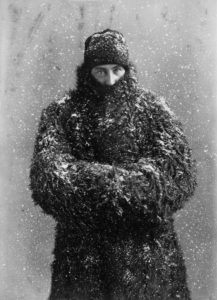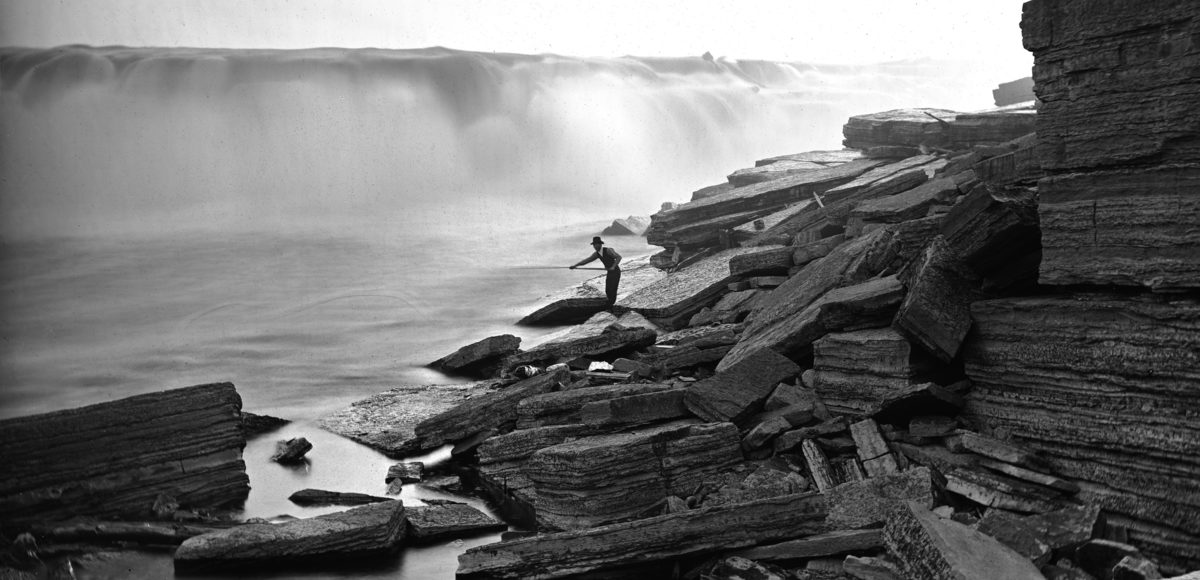The Canadian Museum of History’s “entirely new look at William Notman” will likely be the first look for most visitors. Notman isn’t a household name in 2018, though he was a century ago.
Notman was 30 when he emigrated from Scotland in 1856, and, once settled in Montreal, he was “quick to blur the line between photography and painting,” say the notes for the exhibition, Visionary Photographer. “He also democratized portraiture and paved the way for creative manipulation of photographic images (and) built the most extensive network of photography studios in 19th century North America.”
He was a renaissance man, an adept photographer both artistically and commercially, as well as a skilled businessman and champion networker. Given the sprawl of his studio empire during decades when photography was still young and novel, his archives are an important record of life in Canada in Victorian times. The exhibition does a fine job of displaying the work and the times, albeit with a few head-scratching moments along the way.

A. H. Buxton. William Notman & Son, Montréal, 1887. Reversed glass plate negative. Photo courtesy McCord Museum
Notman cannily befriended influential people in the bustling city of Montreal. “Good natured and unassuming, he made friends easily and was adept at seizing opportunities to advance his business.”
He won a commission to record construction of the Victoria Bridge, and after a boxed set of the photographs was presented to Prince Albert, Notman’s brand was thereafter emblazoned with the declaration, “Photographer to the Queen.”
Notman used cutting-edge “stereography” while recording the bridge project. Visitors to the exhibit can look through plastic sunglasses at an illuminated screen to see a modern recreation of the effect, which seems quaint in today’s holographic world. There are also several stereography viewing machines in their original, beautiful wooden cabinets. Disappointingly, there’s no such machine set up for viewers to look through.
By 1872, a decade before his death, Notman had 26 franchised studios throughout Canada and the United States. The firm continued under his two sons until 1935. The historic scale of his archive can hardly be overstated. There are plenty of portraits of polite society, including a few that’ve been blown up to more-or-less life size on high-res, backlit screens — a thoughtful addition, as prints made from the glass-plate negatives in use at the time were rarely enlarged.
The enlargements include Bishop Francis Fulford, seated with books and looking suitably dour. Thomas D’arcy McGee stands erect, a cane and top hat held in his right hand, and unaware of the fated immortality that awaits him.
Nearby is another curious thing. A visitors book from his studio for 1863 to 1865, while the Civil War was under way, “includes the signatures of several well-known Confederates,” but no names are shared on the wall cards. Are viewers supposed to look at the pages to which the book is opened and see if they recognize anyone?
Speaking of books, the exhibition includes a ledger of studio employee wages, which could be of interest to some visitors. But in another room there’s an order book from a Montreal tailor who made clothes for Notman, and its presence seems random and inexplicable.
But back to the photography, which is wonderfully diverse. There are fancy people and plain people, people at work and at play, adults and children, alone and in groups and in all seasons, in city and in country. There are small, precious portraits of individuals, and large tableaus that Notman made by photographing people in his studio and then pasting onto drawn backgrounds, for reproduction.

Stormy day. William Notman & Son/William Haggerty. Sainte-Catherine Street, Montréal, 1901. Reversed glass plate negative. Photo courtesy McCord Museum
There’s a wall-sized video screen that plays a montage of Notman photographs of Victorian Montreal, and it’s brought to life with Ken Burns-like movement and the audio of a bustling, pre-internal combustion street. It’s also two sided, though one side is blemished by the reflection of a neon “Notman & Son” sign, a reproduction from the 1950s that seems gaudily out of place.
Another issue: One illuminated wall is covered in dozens of unidentified portraits by Notman, and in front of it is a small kiosk with screen, on which visitors can flip through identified portraits — but, with a couple of exceptions, not the same portraits. I watched as two different groups of visitors tried to use the kiosk screen to identify the portraits on the wall before realizing they could not. It was confusing.
A few sour notes aside, the first retrospective of work by Notman, organized by the McCord Museum in Montreal, leaves no doubt about his impact on Victorian Canada, and on how we see the era today. His influence is still felt in subtle but profound ways: In 1860, his studio hosted the first meeting of the Art Association of Montreal, “forerunner of the Montreal Museum of Fine Arts.”
Visionary Photographer continues to April 14.






